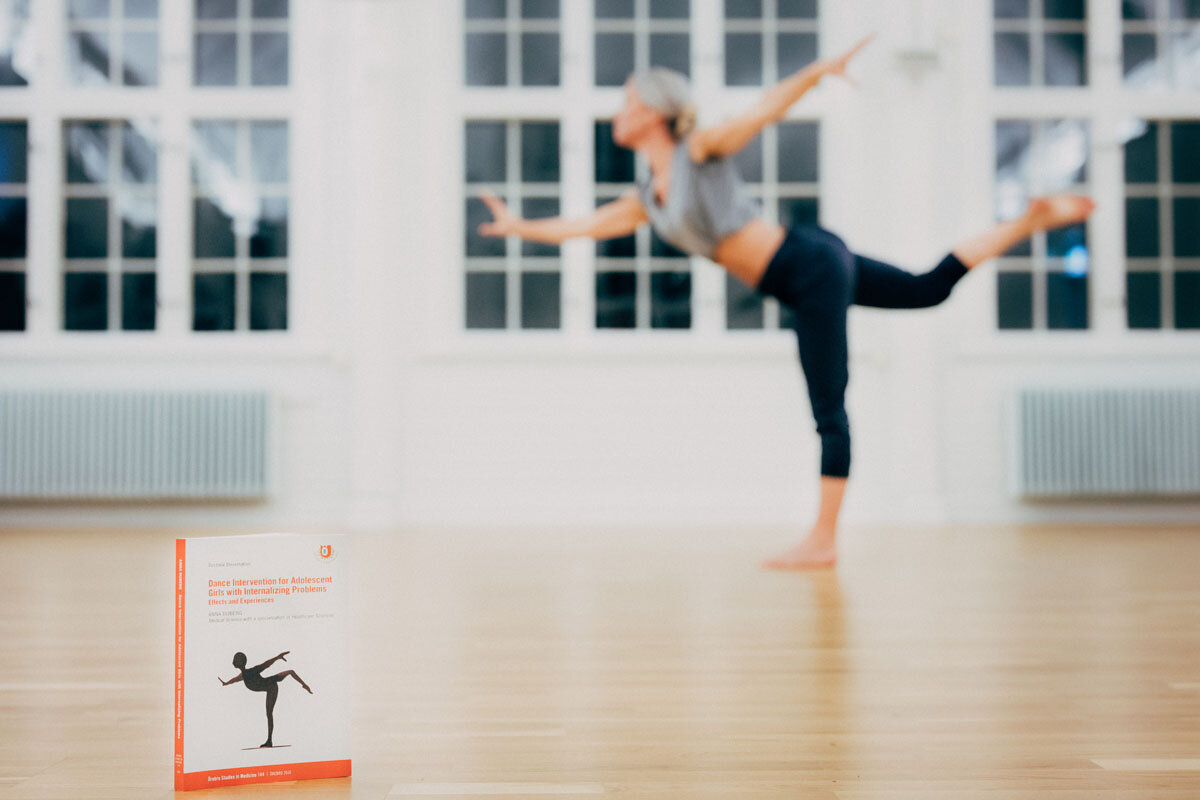Research
Research shows that mental health problems in young people have increased significantly in recent decades. It often manifests itself in physical and emotional symptoms such as headaches, stomachaches, stress, worry, anxiety and depression. Children and young adults who are diagnosed with depression or anxiety disorders are at risk of long disease trajectories, continued need for psychiatric care and drug treatment, more difficulty in completing education, and a higher risk of suicide attempts. In addition to individual suffering, this represents a major societal cost. Studies show that young women, compared to young men, have a higher prevalence of stress-related symptoms, are more frequently hospitalized as a result of self-harm, and have a higher risk of depression and loneliness. Treatment options for girls with this problem are often lacking.
The "Dance Project" is a randomized controlled trial from University Health Care Research Center, Region Örebro County, with the aim of investigating the effect of supplementing student health with dance for girls 13-18 years old with stress-related mental illness. Professor Margareta Möller came up with the idea for the study and was the main project supervisor. Region Örebro County was the main financier. Leg. physiotherapist Anna Duberg designed the intervention and was a PhD student (Örebro University, Department of Health Sciences). A total of 112 girls with recurrent somatic and/or emotional problems were included in the study's analyses. Dance was given twice a week for 8 months and the focus was on the joy of movement and not performance. See publications below or read the Swedish summary report here.
The results showed that the dance group compared to the control group increased their self-rated health and reduced somatic and emotional symptoms after the intervention. Consumption of pain medication also decreased in the dance group. Health economic analysis shows cost effectiveness - due to increased quality of life, reduced number of school nurse visits (54% in the dance group and 25% in the control group reduced the number of visits), and that dance is a relatively inexpensive intervention.
The undemanding atmosphere and supportive community were of great value to participants, as revealed in the qualitative analyses. Dance was seen as an oasis from stress, a refuge from high individual and socio-cultural perceived demands. The central understanding of the girls' experiences was 'Experience embodied self-confidence that opens new doors'. This increased self-confidence generated joy and energy and a new ability to 'take up space' both spatially and metaphorically.
One of the many underlying mechanisms may be the shift in focus that dance offers, i.e. 'from mind to body'. Because aging is often part of mental illness, i.e. being stuck in negative thought patterns and anxiety, dance's attention to movement and music can be particularly valuable. Conscious presence, but also strengthened body awareness and heart rate increases well-being.
The WHO emphasizes the importance of strategies to improve the mental health of young people. Dance is an example of a health economically effective and active intervention that strengthens positive lifestyle habits for the target group. As a non-pharmacological preventive and complementary treatment intervention in groups, dance has the potential to reach many people and thus make a big difference with little money.
The work of the dance project was based on University Health Care Research Center (UFC), Region Örebro Län (RÖL). Anna Duberg defended her thesis at the Department of Health Sciences, Örebro University in May 2016 (see "Thesis" below).
Principal supervisor: Professor Margareta Möller, University Health Care Research Center, RÖL. Co-supervisor: M.Dr. Helena Sunvisson, Örebro University. Co-supervisor: M.Dr. Lars Hagberg, University Health Care Research Center, RÖL. Doctoral student Health economic aspect in the dance project: Anna Philipson. Publications below.
Dance for Health is based on the Dance Project method and was developed with the support of the Social Impact Lab at Örebro University, responsible Åsa Allard.
PUBLICATIONS - dance project


